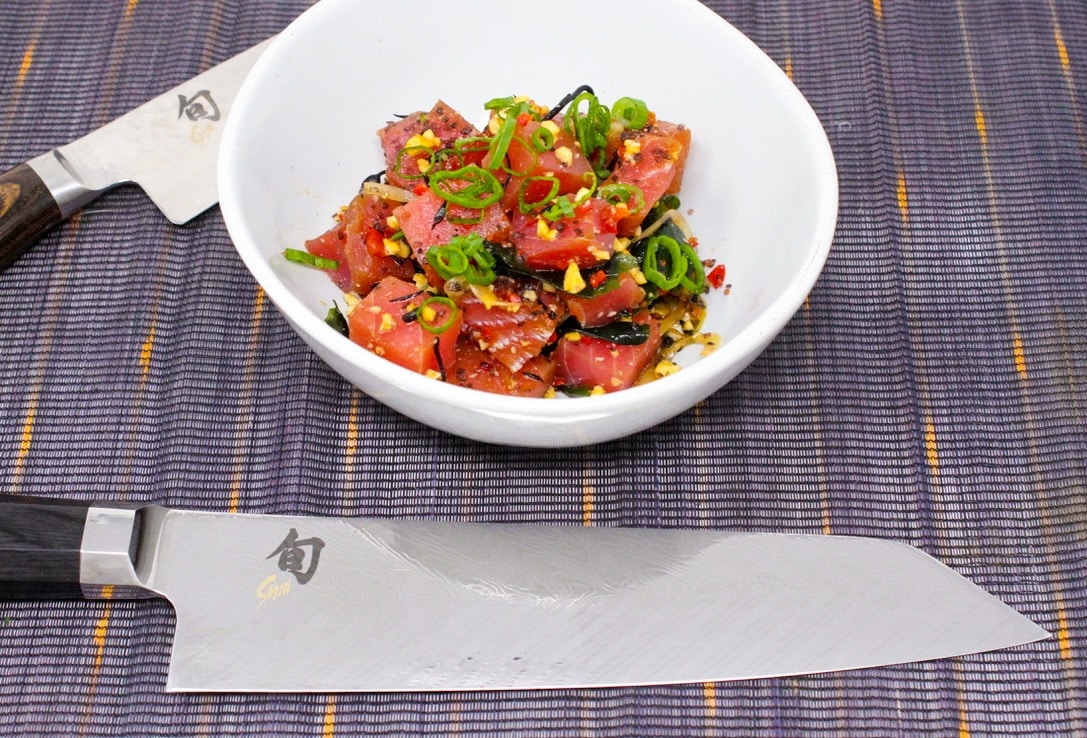Hawaiian poke (pronounced “poh-kay” rather than “pohk”) is an excellent test of knives and of a cook’s knifework. After all, the word “poke” itself means “cut into chunks” in Hawaiian. For a dish with no heat involved it is the knifework that is the real cooking.
The idea that there is no heat involved in poke might come as news to some who are familiar with the sort of poke bowls – poke served atop sushi rice in a bowl – that are common lunch fare on America’s west coast and even as far from Hawaii as Manhattan. But while poke bowls have been re-exported from America’s mainland to Hawaii, they are not a part of Hawaiian tradition.
Indeed, many of the ingredients mainlanders generally associate with poke depart from straight-up traditional Hawaiian-style poke. The ingredients for the traditional version were few and straightforward: fish, limu kohu seaweed, crushed kukui nuts, minced chile pepper and salt. Nowadays the poke is often garnished with scallion greens. Even the fish used most commonly for poke (ahi tuna) differs from the traditional use of small reef fish or, perhaps at most, skipjack tuna.
But cuisine is a living thing, even in a land as passionate about their traditions as Hawaii. The most popular pokes – and they are utterly ubiquitous, available prepared in every grocery store and even neighborhood shops – use ahi (yellowfin tuna), and add soy sauce, sesame oil, onion, and even ingredients like sugar and sometimes tomato to the dish. It is that sort of modernized version that has become what many Americans think of as “Hawaiian poke.”
In Partnership with ShunKai.USA
